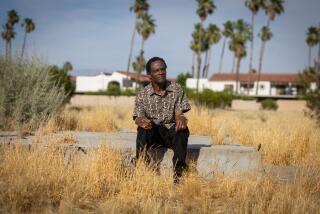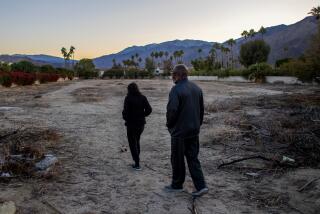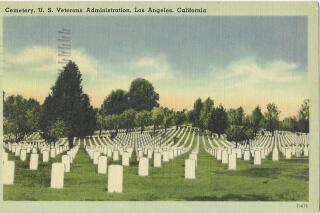Debt to City Looms After Cemetery Cleanup
- Share via
SIMI VALLEY — The gravestones are righted, the irrigation pipes patched, the weeds and broken bottles cleaned out of the El Rancho Simi Cemetery.
But cemetery district officials say they cannot afford to repay the loan the city gave them to do the work and asked the City Council on Monday to forgive their debt.
The council ordered the city staff to review the district’s books and assess whether the district can afford to repay the loan. If not, the staff should look for state money that could be used to retire the debt.
Mayor Greg Stratton said that the district would need help because its current source of income--selling burial plots--is a “long-term loser.
“They’re going to run out of plots, and they’re definitely going to run out of money,” Stratton said.
Six years ago, the council agreed to lend the district up to $350,000 to rescue the neglected graveyard from the ruinous impact of drunks, vandals, weeds and sinkage.
The district was obliged to pay the loan back over 10 years at a 6.08% interest rate from income it earned by selling burial plots and collecting tax revenues from the city.
District officials spent $256,047 building fences, repairing irrigation pipes and righting toppled tombstones to make the overgrown cemetery into a clean, nondenominational burial ground beside the Arroyo Simi.
But in 1993--the very year the district’s board was to start repaying the loan--the state Legislature cut $10,000 out of the special district funds that helped to support the cemetery.
That limited the district’s ability to repay the renovation loan, board member John Williamson said Monday.
With annual expenses of nearly $100,000, including paying two people to operate and maintain the cemetery, the district is running in the red. It receives about $23,000 a year in tax revenues and some income from selling and maintaining burial plots, Williamson said.
“We have no money in this district,” said board member Douglas Demaret.
If the council decides to withhold community development funds from the district to pay back the loan, he warned, “we’ll have dead bodies piling up here, and the grass will become overgrown. And [council members] can try and explain it to the taxpayers.”
The graveyard has room for 500 more full-size casket burials and about 700 more infants and cremation urns, the officials said. But the money earned from the sale of those plots must be used to pay the cemetery’s operating costs, the largest of which is water to keep the grass and trees green.
With not enough regular income to repay the loan, Williamson pleaded with the council Monday night to work with the district, rather than simply trying to collect the debt.
“We’re either on the same side, or you guys can have it,” Williamson said, offering to disband the district board and give the graveyard to the city.
Council members said they sympathized with the board, because its members had done a good job overseeing the cleanup.
“It was a disaster,” Councilman Bill Davis said of the old cemetery. “I wouldn’t have buried my dog there . . . . Now I can tell you today that it is gorgeous.”
More to Read
Sign up for Essential California
The most important California stories and recommendations in your inbox every morning.
You may occasionally receive promotional content from the Los Angeles Times.










